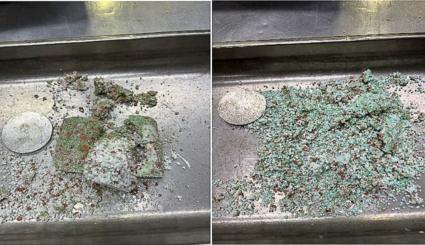Nitrogen Thieves: The Top Three Nitrogen Loss Mechanisms

It may not sparkle like a diamond, but nitrogen (N) is invaluable to crop health and yield, and can be one of a grower’s most costly inputs. A big reason for that is it can be easily lost to the surrounding environment, requiring compensation with even more N. Here are the top three thieves that can be blamed for N loss:
#1 The air itself
When your N disappears into thin air the process is called volatilization. Volatilization is the loss of N to the atmosphere as ammonia gas, and typically occurs between two and three weeks after a top-dress fertilizer application.
The greatest losses occur from surface application of fertilizer containing ammonium (UAN, urea, manure, blended dry fertilizers), particularly in conditions where soil pH is higher than 7.3, during high temperature, windy weather or on dense crop residue. As soil pH increases from 6.5 to 7.5 volatilization losses double from 10% to 20% for urea left on the surface for 4 days. Since there are so many influencing factors, predicting volatilization and the extent of its impact can be difficult.
#2 Leaching
When water is added to soil beyond its water-holding capacity, N and other nutrients are carried deeper into the soil, out of the plant’s reach.
Leaching from any soil type can occur during heavy precipitation or irrigation, but N leaching occurs most often in coarse-textured or sandy, well-drained soils. Since coarse-textured soils have a limited water-holding capacity, they are more at risk for N loss compared to fine-textured soils. For instance, silt loam or clay loam soils may retain up to 400% more water per foot of soil than some sandy soils.
#3 Invisible Bugs
Anaerobic microorganisms in the soil are too small to be seen with the naked eye – but they can do a large amount of damage to N inputs. Anaerobic bacteria strip oxygen from nitrate in fertilizer, which can produce nitrogen gas, nitric oxide or nitrous oxide. This process is called denitrification, and results in these gases leaving the soil and entering the atmosphere in as little as 15 minutes after soil saturation – robbing crops of the necessary N availability they need for healthy growth.
Wet or poorly drained soil, compaction, warm soil temperatures or readily decomposable organic matter can all cause oxygen levels in the soil to drop, triggering a need for the bacteria to denitrify the soil in order to live.
While soil moisture plays the biggest role in determining the extent and duration of denitrification, studies show that microbial processes causing denitrification are most rapid at temperatures between 80°F (27°C) and 100°F (38°C).
The Best Defense
The best way to protect your inputs from the worst N loss culprits is to counteract their mechanisms. Choosing a controlled-release product such as ESN Smart Nitrogen can safeguard against the factors that lead to N loss, such as overly hot or wet conditions. ESN’s unique polymer coating protects N from the above three loss mechanisms while allowing N to be released at a rate that is controlled by soil temperature and matches the N demand of the growing crop. N loss is reduced, thereby lowering the cost of inputs and improving your bottom line.


